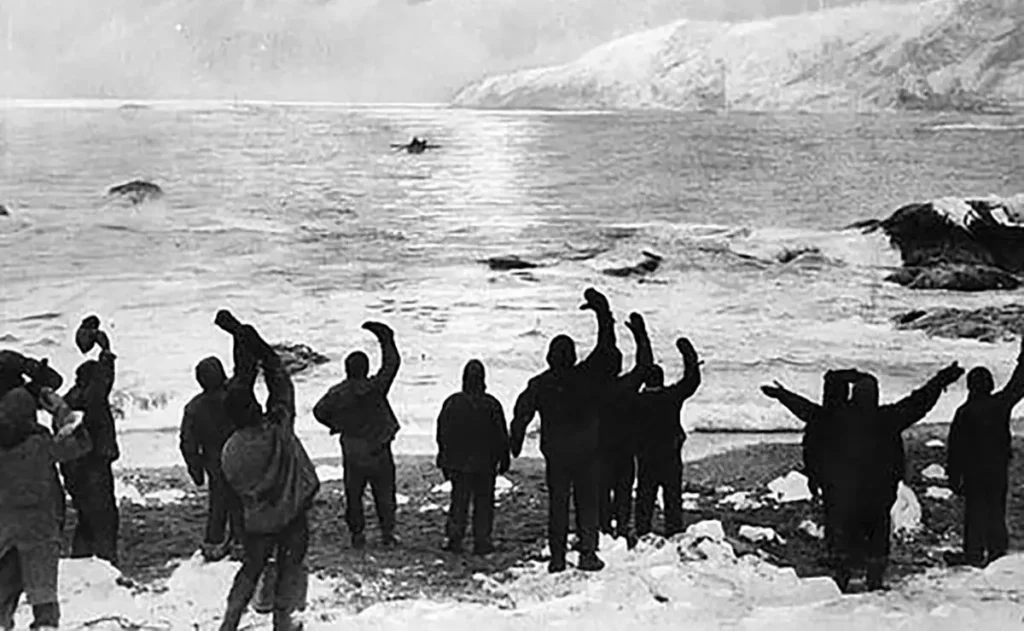Ernest Shackleton stands as one of history’s most esteemed polar explorers, celebrated for his extraordinary leadership and unwavering resilience in the face of daunting challenges. His adventures in the harsh, frigid landscapes of Antarctica during the early 20th century, especially the formidable Imperial Trans-Antarctic Expedition from 1914 to 1917, have etched his name in the annals of exploration. Shackleton’s ability to inspire courage and foster teamwork among his crew amidst the extreme hardships they faced has transformed him into an enduring symbol of human determination and fortitude. His legacy is one of unparalleled grit and the indomitable spirit of exploration.

Ernest Shackleton: early life and background
Ernest Shackleton was born on February 15, 1874, in Kilkea, County Kildare, Ireland. He was the second of ten children in an Anglo-Irish family. His father worked as a doctor, and the family later relocated to London, where he attended Dulwich College. However, Shackleton did not complete his education; he left school at the age of 16 to join the merchant navy, in search of adventure and a life at sea.
Early career and first Antarctic expedition
Ernest Shackleton’s passion for exploration drove him to join the Discovery Expedition (1901–1904), which was led by Robert Falcon Scott. This expedition marked Shackleton’s first experience in Antarctica and the start of his polar exploration career. He served as the third officer on the RRS Discovery and was part of a team that set a new record for the farthest southern latitude reached at the time, which was 82° 17′ S. During the expedition, Shackleton suffered from scurvy and had to return home early. This early departure is often thought to have intensified his desire to lead his own expeditions in the future.
Nimrod expedition (1907–1909)
Ernest Shackleton’s first independent venture, the British Antarctic Expedition (often referred to as the Nimrod Expedition), aimed to reach the South Pole while also conducting scientific research. During this expedition, Shackleton and his team achieved a new record for the farthest south latitude, reaching 88° 23′ S—just 97 miles (156 km) from the South Pole. They were also the first to successfully climb Mount Erebus, Antarctica’s active volcano, and they identified the location of the South Magnetic Pole. Although they did not manage to reach the South Pole, upon his return, Shackleton was celebrated as a hero and was knighted by King Edward VII.

Photo: probably James Murray – Public Domain
Imperial Trans-Antarctic expedition (1914–1917)
Shackleton’s most famous expedition, known as the Endurance Expedition, aimed to cross Antarctica from the Weddell Sea to the Ross Sea via the South Pole. The expedition involved two ships: the Endurance, led by Shackleton, and the Aurora, which was to support the mission from the opposite side of the continent.
In January 1915, the Endurance became trapped in pack ice in the Weddell Sea. After months of being stuck, the ship was ultimately crushed by the ice and sank in November 1915.




Following a failed attempt to march across the ice to safety, Shackleton established Patience Camp. He and his crew camped on the ice until April 2016, when they used three lifeboats to reach Elephant Island.

Shackleton and five other men then embarked on an 800-mile (1,300 km) journey in a small lifeboat to seek help, eventually arriving on the south coast of South Georgia. After a grueling trek through the island’s interior, they reached the north coast, where a whaling station was located, 26 days after leaving Elephant Island.

Shackleton then organized a rescue mission for the remaining crew on Elephant Island. Due to the ice conditions, he was only able to reach his crew at the end of August, four months after he had left them. Miraculously, all 28 members of the Endurance crew survived.

Later life
Ernest Shackleton served in World War I, including a mission to recruit in South America. In 1921, he embarked on the Shackleton-Rowett Expedition to explore the sub-Antarctic regions. Unfortunately, he suffered a heart attack and died on January 5, 1922, aboard the Quest off the coast of South Georgia Island. At his wife’s request, he was buried on the island.
Shackleton is remembered not for reaching the South Pole but for his extraordinary leadership and his ability to keep his crew alive in the most extreme conditions. His story has inspired countless books, films, and leadership seminars, often cited as a model of crisis management and teamwork. The Endurance22 Expedition in 2022 successfully located the wreck of the Endurance in the Weddell Sea, reigniting interest in his legacy.
Key quotes from Ernest Shackleton
- “Difficulties are just things to overcome, after all.”
- “Optimism is true moral courage.”
- “By endurance we conquer.”
- A quote about the Endurance Expedition: “We had seen God in his splendours, we had heard the text that nature renders. We had reached the naked souls of man.”
Ernest Shackleton: legacy
Ernest Shackleton’s life and expeditions are a testament to human resilience, leadership, and the spirit of exploration. His ability to inspire and lead his team through unimaginable challenges has made him a timeless figure in the history of exploration. Whether you’re an adventurer, a leader, or simply someone who appreciates stories of perseverance, Shackleton’s legacy continues to inspire people around the world.

